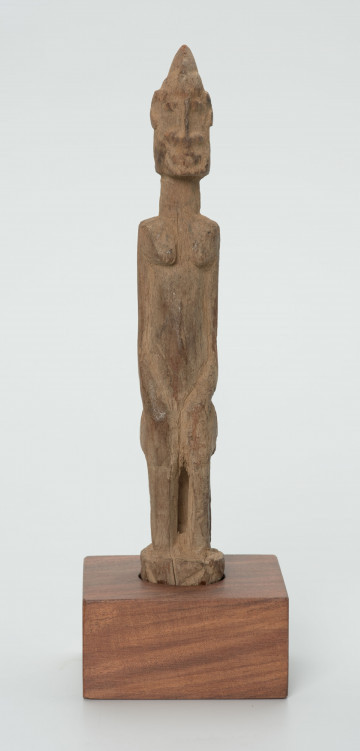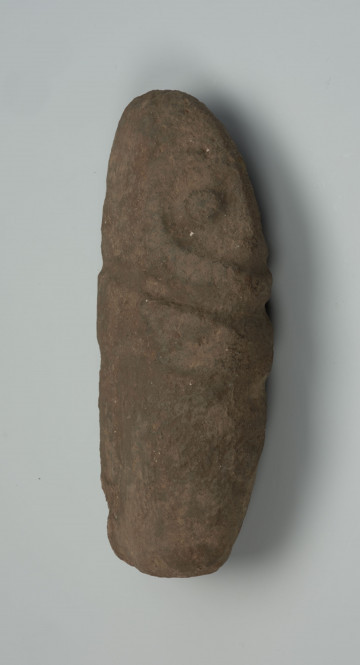
Figurine - ancestor
między 1901 — 1950
National Museum in Szczecin
Part of the collection: Collection of Dogonian art
The figurine represents a woman with a vessel on her head. In the Dogon country, potters are always the wives of blacksmiths. Their workshops are located within the homesteads. These are usually separate places fenced off with walls and covered with canopies, in which there is a large concave and concave stone, which is the basic and only permanent equipment of the potter's workplace. The blacksmith's wife begins her work by making clay. She mixes pon (dry clay) with a bit of water and crushed fragments of old vessels. This mixture is worked with a kunai (a small tamper), with the help of the other hand, until a plastic material is obtained. Then he begins to model the vessel. He places a piri mat made of baobab fibre on the stone basin and, striking the clay lump with a round stone, forms the shape of a vessel of the planned size. Working on the piri mat, the woman immediately obtains the pattern on the vessel, which reflects the weave of the mat. After making a spherical body, she evens out its edges and attaches the spout formed from clay rollers. In order to produce a clay vessel, the Dogon potter uses several techniques altogether: kneading, hammering with a stone or a pestle, rolling and chipping. When smoothing the walls of the vessel she also uses the shells of broken vessels, fragments of calabash, pieces of wood, fresh leaves or blades of grass.The moulded vessels dry in the shade and then undergo heat treatment, i.e. burning. According to Dogon oral tradition, the idea of firing pots was born in the smithy when the blacksmith's wife put her pots near the fire so that they would dry better and faster. In this way she discovered that clay hardens under the influence of high temperature and the pots become more durable.
Ewa Prądzyńska
Author / creator
Dimensions
cały obiekt: height: 19 cm, width: 3 cm
Object type
figure
Creation time / dating
Creation / finding place
Identification number
Location / status

między 1901 — 1950
National Museum in Szczecin

między 1951 — 2000
National Museum in Szczecin

między 1951 — 2000
National Museum in Szczecin
DISCOVER this TOPIC
Castle Museum in Łańcut
DISCOVER this PATH
Educational path